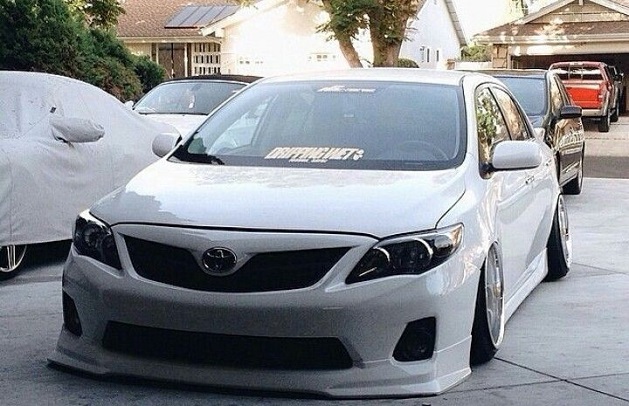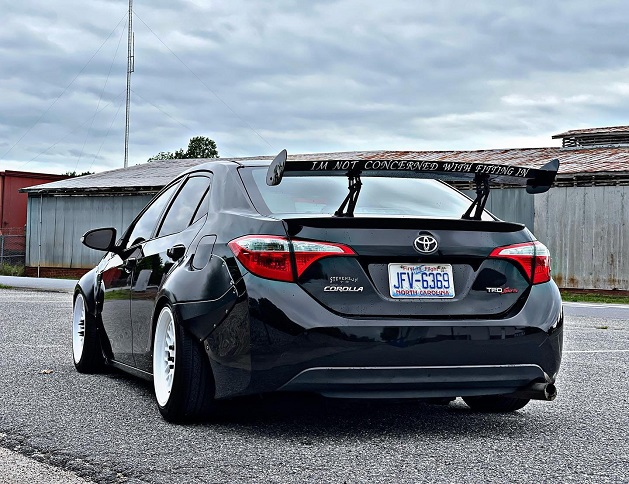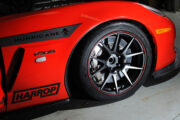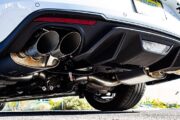While most of us associate Toyota with affordable cars that just last forever, the company nevertheless has a few performance gems in its model lineup. The GR Yaris is effectively a road-legal rally car pumping out 200kW from an engine no bigger than three pints of beer. The revised GR 86 builds on the driving credentials of the first-gen car by adding crisper steering, a stiffer suspension layout, and a bit more grunt. Big thrills and the fastest acceleration times are in Toyota’s fastest production car to date, the BMW co-developed coupe, the Supra. All cars have a lot to offer. But if you’re after more performance, higher top speeds, and the ultimate road holding, a few aftermarket accessories can get you there.
Aerodynamics and Body Kit Parts
These are tasked with improving downforce to literally stick the car to the road. Any Toyota aftermarket part that helps in this respect means better road holding, faster cornering, and more stability at higher speeds. Parts either cut or redirect oncoming air. Front splitters, for instance, ‘split’ air above and under the car to produce slow-moving and low-pressure air above the car to push it down. This is often aided by the work put in by front spoilers to ‘spoil’ the air left and right and is what improves stability in turns. Add a pair of side skirts, stemming the length of the wheel arches, to prevent air gathering under the car, rear diffusers to diffuse air exiting under the car, and spoilers or wings for additional downforce. Going with complete kits gives the best results. For the rear-drive Supra and 86 (the GR Yaris is AWD), there’s more control, with reduced oversteer.
Besides the obvious benefits that you feel through the steering wheel, body kit parts just look good. They add a little more character and make your Toyota stand out from the rest. Pay attention to the materials used. Cheaper parts are made of polyethylene and fibreglass but lack strength and can shatter on impact. The middle ground is occupied by parts in ABS plastic, being both flexible and strong. If money isn’t an issue then always opt for carbon fibre. This has the highest strength, comes in much lighter, and scores points on looks.

Exhausts and Air Intakes
All three Toyota models aren’t exactly short of power. But you can add more and not break the bank. Engines need to breathe and getting more air is the basic recipe to boost power levels. This is done by fitting aftermarket air intakes, that gulp more air (and cool it), thus providing the needed oxygen for more efficient combustion. Cold air intake kits include larger air scoops, bigger air boxes, wider piping, and bigger air filters. Combined, these are often the first parts changed out in vehicles primed for pushing more power to the wheels.
More efficient combustion is aided by a matching exhaust. Wider piping and revised parts allow spent gases to exit the car faster, thus allowing for new air and another combustion cycle, or what is known as exhaust scavenging. However, with more power (and air) comes more pressure and higher exhaust temperatures. Here better materials and manufacturing processes (or coated stainless steel and mandrel bending respectively) improve piping strength. There’s no restrictive backpressure buildup, but instead an increase in the engine’s ability to draw more air in. Stainless steel also keeps the piping intact and rust-free when hitting road debris or sprayed by water. You get better performance and durability in the same package.
In performance terms, changing out the complete exhaust from manifolds to tailpipes offers the biggest power gains. Conservative estimates are anywhere between 5 to 10 per cent of rated factory numbers. So, a turbo-back exhaust for the GR Yaris should show another 15 to 25 bhp on a dyno. And the extra horses are something that you actually feel. Since more parts are involved (and more thought in the overall design), prices are higher than a comparable cat and axle-back exhausts. Lastly, if you’re a sucker for a raspy exhaust note, different combinations of mufflers will definitely get you grinning.

Suspension Upgrades
The new GR 86 has stiffer springs, but going with a bespoke set of coilovers moves drivability a step higher. These are pre-assembled kits with calibrated springs and shocks, with more adjustment in how the car reacts when going over bumps and road imperfections (or compression rates in springs and rebound rates in shocks). In short, coilovers are an essential Toyota aftermarket part to enhance control, and vehicle stability. The car accelerates faster (as there is no rear squat), holds direction better when thrown into turns, and brakes smoother, with reduced dive. This is across different road surfaces and weather conditions. Higher-performing versions are offered for the GR Yaris and Supra.
Two basic types of coilovers exist. While both are installed in place of the stock suspension and lower the vehicle, monotubes are tuned for more aggressive driving, with dual tube variants soaking up more of unsuspecting potholes and cracks. Either way, the ride is firmer than from the factory ‘Sports’ suspension the cars come with, but still adds a dose of comfort when you need it and plays nicely with adaptive suspension modes in the Yaris and Supra.


